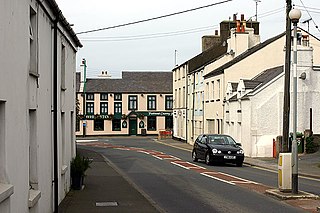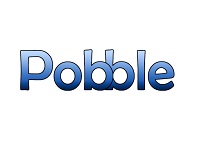
Castletown is a town in the Isle of Man, geographically within the historical parish of Malew but administered separately. Lying at the south of the island, it was the Manx capital until 1869. The centre of town is dominated by Castle Rushen, a well-preserved medieval castle, originally built for a Viking king.

Ballasalla is a village in the parish of Malew in the south-east of the Isle of Man. The village is situated close to the Isle of Man Airport and 2 miles (3 km) north-east of the town of Castletown.

Ballabeg is a village on the Isle of Man. It is in the parish of Arbory in the sheading of Rushen, in the south of the island near Castletown. There are several small villages and hamlets with the name, although Ballabeg in Arbory is the most well-known and populous.

The Manx are a minority ethnic group originating on the Isle of Man, in the Irish Sea in Northern Europe. They belong to the diaspora of the Gaelic ethnolinguistic group, which now populate the parts of the British Isles and Ireland which once were the Kingdom of the Isles and Dál Riata. A recent genetical analysis of traditional Manx surnames, identified that the majority of the native manx population belong to the Haplogroup R-DF13 group. The native culture of the Isle of Man is described as Celtic with significant Gaelic, Norse, Norse-Gaelic, and minor northern English influences. The Manx are governed by themselves through Tynwald, the legislature of the island. Which was introduced by Viking settlers over a thousand years ago. The native mythology and folklores of the Manx, belong to the overall Celtic Mythology group, with Manannán mac Lir, the Mooinjer veggey, Buggane, Lhiannan-Shee, Ben-Varrey and the Moddey Dhoo being prominent mythological figures on the island. Their language, Manx Gaelic is derived from Middle Irish, which was introduced by settlers that colonised the island from Gaelic Ireland. However, Manx gaelic later developed in isolation and belongs as a separate Goidelic language of the Insular Celtic languages.

Rushen, formally Kirk Christ Rushen, is one of the seventeen historic parishes of the Isle of Man.

Arbory is one of the seventeen historic parishes of the Isle of Man.

Malew is one of the seventeen parishes of the Isle of Man.

The Cooish is the name of a festival that promotes Manx language and culture that takes place on the Isle of Man each November. The word 'Cooish' is a Manx word that has many meanings. It can translate to mean a chat, a meeting, a cause, an issue, or a get-together.
Mooinjer veggey is the Manx for little people, a term used for fairies in Gaelic lore. The equivalent Irish and Scottish Gaelic are Muintir Bheaga and Muinntir Bheaga.

Bunscoill Ghaelgagh is a government-run Manx-language primary school in St John's, Isle of Man that has enabled 170 children to learn fluent Manx. As of 2011 it is the only school in the world where children are taught their lessons solely in Manx and which allows children to learn the language fluently. Pupils may then go on to Queen Elizabeth II High School in Peel where they can study a GCSE equivalent qualification in Manx as well as up to two subjects in the language to maintain their fluency, or to the high school in their catchment area.

Rushen is a House of Keys constituency in the south of the Isle of Man which incorporates most of the parish of Rushen together with the village districts of Port Erin and Port St Mary.

Fairy Bridge, Isle of Man is a small bridge over the Santon Burn in the Isle of Man, located on the primary A5 Port Erin to Douglas road, at grid reference 305720, on the parish boundary between Santon and Malew. A superstition associated with the Fairy Bridge is that passers-by must greet the fairies as they cross it; it is considered bad luck not to greet them.
Graham Cregeen is a Manx politician who served as Member of the House of Keys for Arbory, Castletown & Malew in the Isle of Man until 2021. He was Minister for Justice and Home Affairs from 2020 to 2021.
Doug Fargher also known as Doolish y Karagher or Yn Breagagh, was a Manx language activist, author, and radio personality who was involved with the revival of the Manx language on the Isle of Man in the 20th century. He is best known for his English-Manx Dictionary (1979), the first modern dictionary for the Manx language. Fargher was involved in the promotion of Manx language, culture and nationalist politics throughout his life.

Pobble is a Manx language advocacy group and charity that works to promote the Manx language as "a community asset" on the Isle of Man. Pobble has also awarded the Aundyr Brian Stowell since 2019.

General elections were held in the Isle of Man on 23 September 2021. A record ten women were elected, twice as many as the five elected at the previous election. For the first time, in two constituencies, both elected MHKs were women. Four government ministers failed to be re-elected.
Arbory and Rushen is a local authority area in the south-west of the Isle of Man, designated as a parish district, and with its own parish commissioners. It was created in 2020 by the merger of the former parishes of Arbory and Rushen; each of those two are now electoral wards within the combined parish which elect three commissioners.














